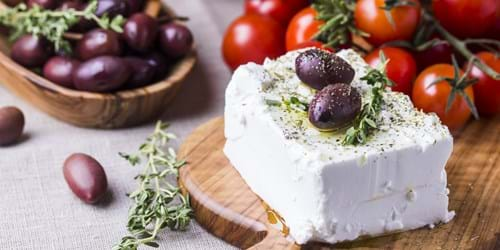TV chef Rick Stein says it’s probably the most famous of all dishes to be found on a Greek menu. So why didn’t the Ancient Greeks enjoy the kind of salad that is so popular with locals and tourists today?
It’s a simple meal that doesn’t require painstaking preparation or Bake Off skills. But it is possibly the most popular dish to be served in tavernas the length and breadth of Greece.

It’s the Greek salad, a colourful and tasty treat of tomatoes, cucumber, onion and olives drizzled in extra virgin olive oil, dusted in herbs and crowned with a mouth-watering slab of feta goat’s cheese.
Celebrity chef Rick Stein says the “ubiquitous” Greek salad is probably the most famous dish in the Greek culinary lexicon.
It can be enjoyed as a main meal, a side dish or shared over drinks with friends. Those in the know keep back a piece of bread to mop up the delicious natural sauce at the bottom of the bowl.

It’s the perfect food to eat outdoors and goes well with almost any kind of drink, especially cold beer or retsina on a hot, sunny afternoon. But there are some things that don’t go down well with the Greeks who are proud of their traditional salad.
No lettuce!
Any kind of green leaf salad, including lettuce, is off the list of ingredients. So are red peppers, meat and fish. And, by the way, no truly patriotic Greek would serve the feta in cubes – or flood the dish in pre-prepared sauce.
Tomatoes?
Hippocrates of Kos prescribed healthy eating 2,400 years ago when he was carving a reputation as the Father of Medicine. In those days the better off Ancient Greeks dined on roasted meats, fruit, olives and cheese and washed it down with wine.

But Hippocrates would never have enjoyed the kind of Greek salads that are served today. Tomatoes, a South American fruit, didn’t take off as a European food until the 16th century, enabling the Italians to invent pizza.
They didn’t reach Greece for another 200 years or so. Now Greece grows getting on for a million tons of them in a year and the volcanic island of Santorini is famous for its tasty, tiny, cherry tomatoes.
Do it yourself
The Greeks call their salad “horiatiki” or village salad because, like Britain’s ploughman’s, it contains the ingredients of a traditional farm worker’s lunch. So how do you make a Greek salad worthy of a taverna? Here’s a recipe:
Tomatoes are, of course, the key ingredient. Any tourist who has eaten them in Greece gets back home and wonders why their supermarket tomatoes don’t explode with juice and flavour. Use two or three and rough cut them into generous bite-size chunks.
One cucumber, sliced and then cut in half. Peeling is optional. Olives - about half a dozen black Kalamata olives are best. A red onion and a small green pepper, both thinly sliced.
Put the salad in a shallow bowl. Add a little salt, a decent amount of olive oil (but don’t drown it) and a sprinkling of oregano. Gently mix together. Top it with a generous chunk of feta, drizzle some oil and add a bit more oregano. And enjoy the delightful taste of Greece – wherever you may be.




